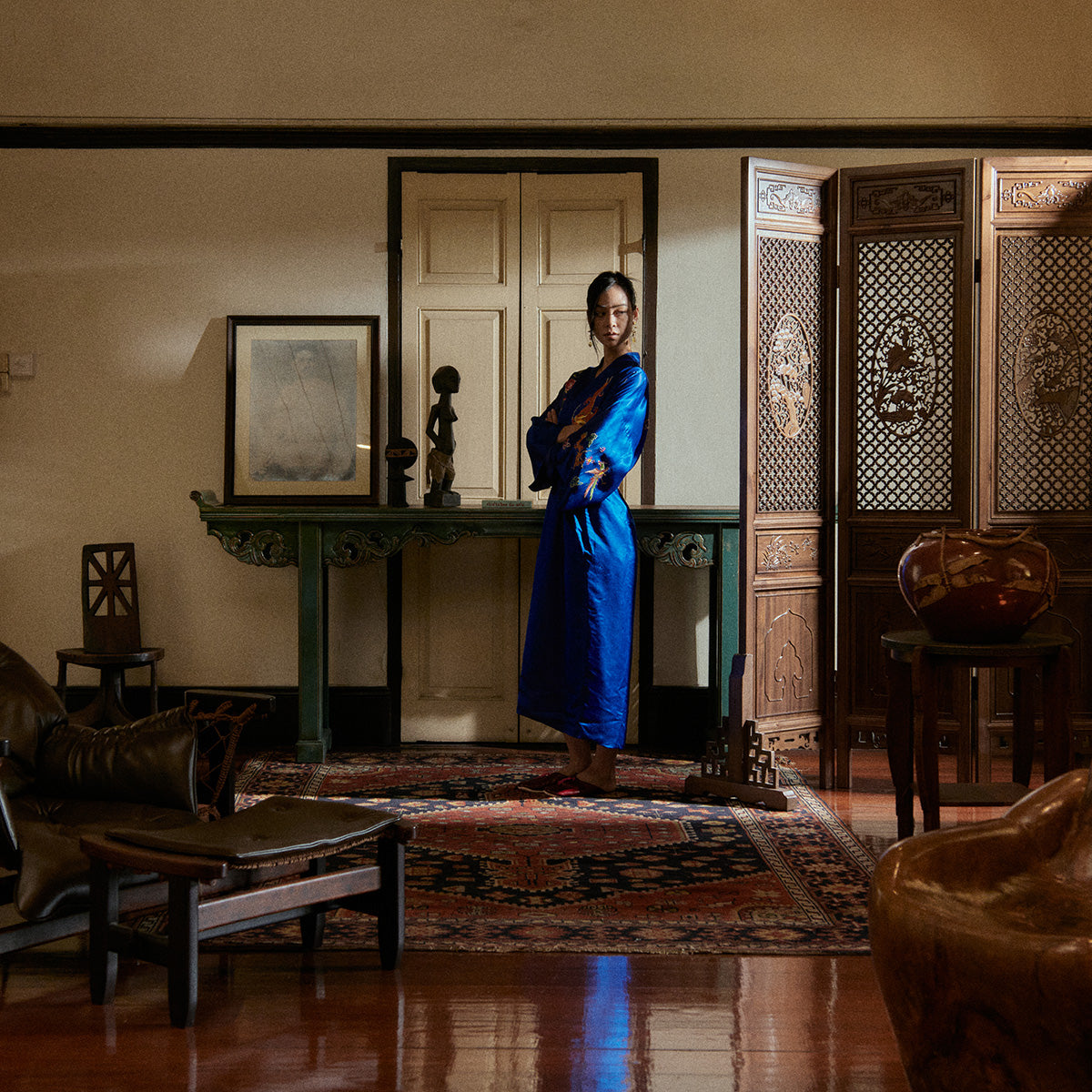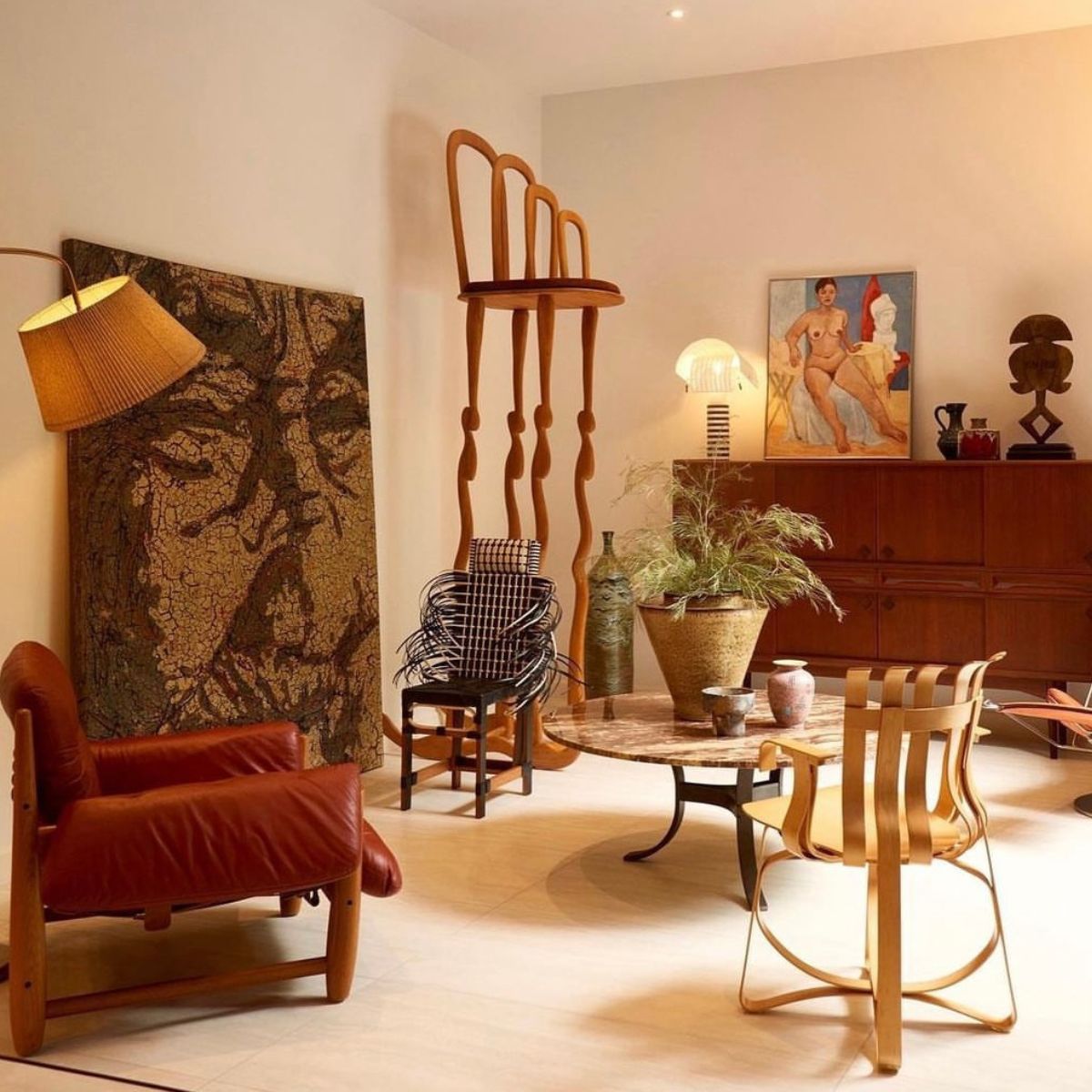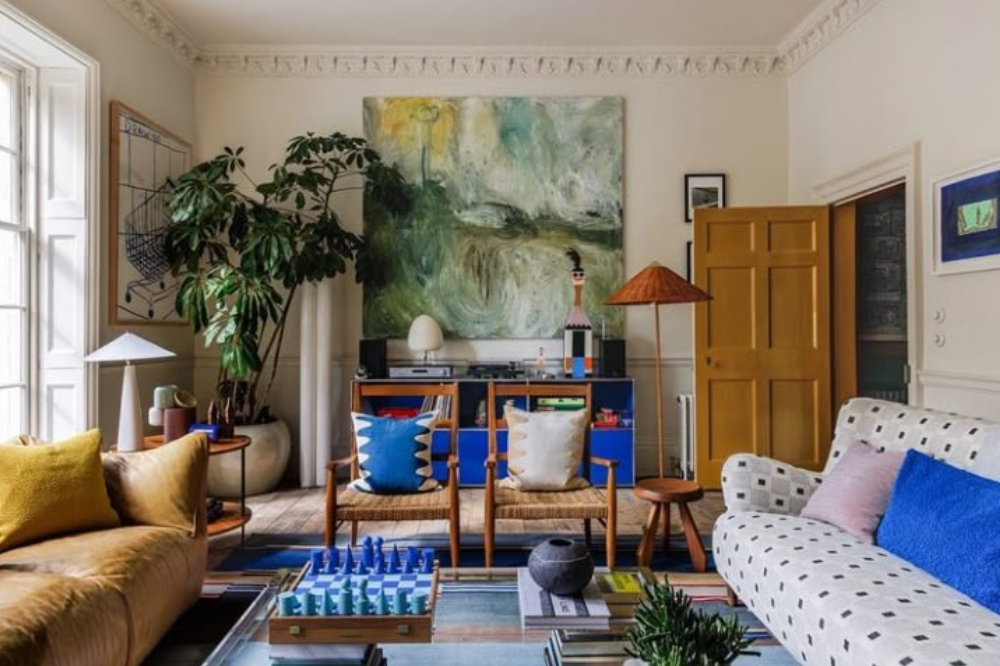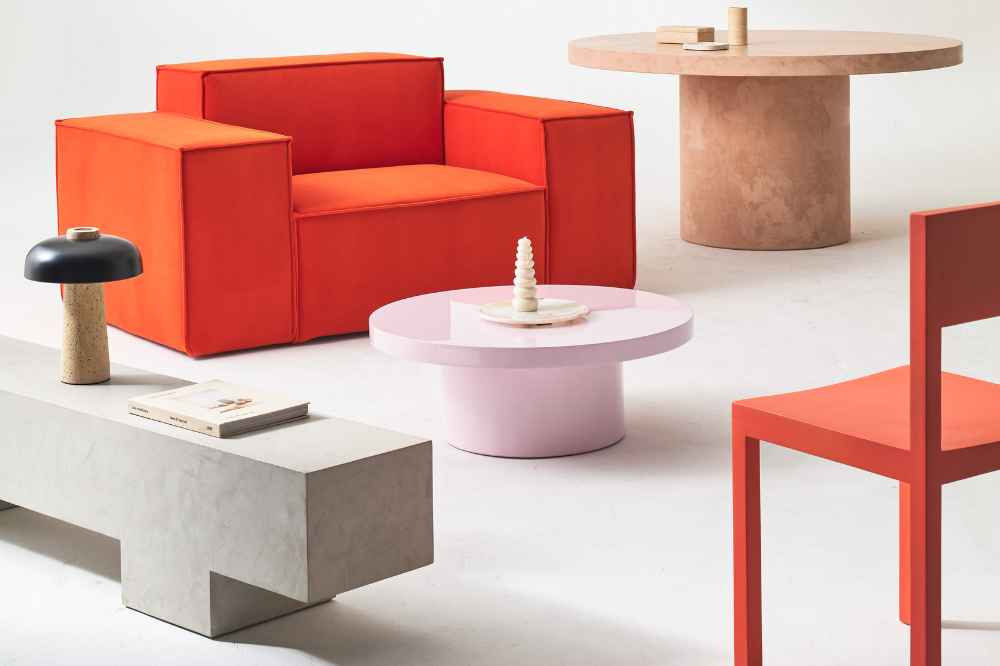Maximalism is making a major comeback in 2025. Both fashion and interior designers are embracing more colour, texture, and layered complexity, challenging the once-dominant reign of sparse minimalism. Even quiet luxury—one of the most defining design trends of recent years—is undergoing an evolution, now leaning toward individuality and expressive detail over uniform neutrality. In this article, we explore how to engage with this rich, visual language in a way that is not only beautiful, but also ethical and deeply meaningful.
Maximalism's Meaningful Return

Maximalism is often misunderstood as chaotic or indulgent. But when practiced with thoughtfulness and restraint, it becomes something else entirely: a visual archive. Instead of only chasing trends or overfilling a room with disposable decor, ethical maximalism encourages us to gather pieces with story, texture, and resonance. This might mean inherited furniture, a collection of antique and pre-loved decor pieces, books collected over a lifetime, or art found on travels. These are not just decorations - they are expressions of memory, identity, and intention.
Surround Living and the Ethics of Curation
At Surround Living, we embrace the philosophy of slow design — a mindful approach that values craftsmanship, sustainability, and timeless aesthetics. Rather than following fast-moving trends or mass production, we work with artisans, vendors and design studios who create in small batches, using traditional techniques and materials that are naturally eco-conscious.
From hand-carved teak and responsibly sourced rattan to thoughtfully repurposed vintage treasures, each piece reflects a commitment to intention and care. The process is anything but rushed — a single item can take over six weeks to complete, requiring the combined expertise of at least three artisans and designers. From initial concept to the final finish, it’s a collaborative act of craftsmanship that prioritizes quality, sustainability, and soul.
Slowing Down the Design Process

Above (left): Teak Wood Vase with Silver Iguana, Oriental Wood Carved Panel Decoration
Unlike consumption-driven design, which prioritises novelty and speed, collecting places value on time and meaning. A collector doesn’t seek to fill space but to cultivate it. The room becomes a curated ecosystem, where every item holds significance—a vintage print from a local flea market, a chair that once belonged to a grandparent, or a sculpture by a lesser-known artist you discovered in a backstreet gallery. This practice not only resists the throwaway culture of fast interiors, but also celebrates craftsmanship, history, and cultural continuity.
Preloved Pieces and Climate-Conscious Design

Shopping vintage and antiques—or preloved pieces—adds another layer to this ethos. These objects carry not only beauty and history but also environmental value. Choosing to furnish with vintage helps reduce the carbon footprint of our interiors. It extends the life of objects, reduces waste, and keeps materials in circulation. It also fosters deeper relationships with the things we own—an antidote to the disposable habits of fast design. In this way, collecting becomes a small but meaningful form of climate action.
Designing Against Homogenisation

Ethical maximalism also challenges homogenisation in design. In an era where global trends make homes look increasingly alike, collecting becomes a way to express individuality. It allows for aesthetic pluralism: a room where French antiques co-exist with contemporary Thai textiles, or where modern sculpture shares space with childhood drawings. This layering isn’t about clutter; it’s about coherence through personal narrative.

The Surround Edit: Mixing Eras, Balancing Textures
Start by anchoring your space: a vintage walnut cabinet can ground a room filled with clean-lined contemporary seating, giving visual weight and a sense of history. Layer textures thoughtfully — a weathered teak bench paired with crisp linen cushions, or a mid-century lacquered table offset by the rough honesty of handwoven mats. These tactile juxtapositions invite the eye and hand to linger.
To create cohesion across eras, use subtle repetition — whether through echoing a palette, silhouette, or material. A thread of brass detailing, or a recurring warm tone, can tie disparate pieces into a harmonious whole.

Elevate the Eye: Playing with Height and Sculptural Form
Consider the vertical dimension — height is as much a design tool as colour or texture. Varying the elevation of your pieces creates rhythm and visual interest. Let a tall, slender antique mirror rise beside a low-slung modern sofa, or punctuate a corner with a sculptural floor lamp that draws the eye upward. Play with proportions: pedestal tables, plinths, and wall-mounted art can shift the balance of a room and create moments of drama or intimacy.
Sculptural thinking isn’t reserved for art alone — furniture can be just as expressive. A carved chaise, a bold ceramic vase, or a minimalist light fixture can each act as spatial punctuation, shaping how you move through and experience the room. Embrace negative space not just around objects, but above and between them — allowing light and shadow to become part of the composition.
And don’t overlook the power of space. Thoughtful negative space allows each object to breathe and lets your curation shine — not as clutter, but as quiet coherence rooted in personal narrative.
As the design landscape continues to evolve, ethical maximalism offers a path forward: one where beauty is not sacrificed, but imbued with responsibility, and where every object carries a unique story.




